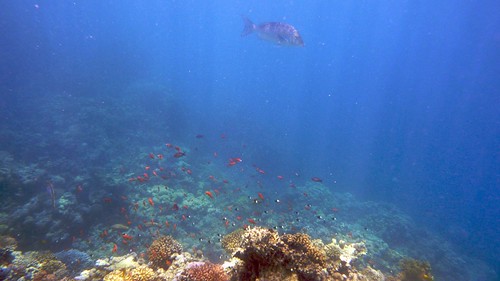 A new work by UC Irvine and other scientists has found that trillions of plankton near the surface of warm waters are far more carbon-rich than has long been thought. The finding suggests models of carbon dioxide in the world's oceans need to be revised.
A new work by UC Irvine and other scientists has found that trillions of plankton near the surface of warm waters are far more carbon-rich than has long been thought. The finding suggests models of carbon dioxide in the world's oceans need to be revised.Global marine temperature fluctuations could mean that tiny Prochlorococcus and other microbes digest double the carbon previously calculated. Carbon dioxide is the leading driver of disruptive climate change.
In making their findings, the researchers have upended a decades-old core principle of marine science known as the Redfield ratio, named for famed oceanographer Alfred Redfield.
He concluded in 1934 that from the top of the world's oceans to their cool, dark depths, both plankton and the materials they excrete contain the same ratio (106:16:1) of carbon, nitrogen and phosphorous.
The new study's researchers found dramatically different ratios at a variety of marine locations. What matters more than depth, they concluded, is latitude. In particular, the researchers detected far higher levels of carbon in warm, nutrient-starved areas (195:28:1) near the equator than in cold, nutrient-rich polar zones (78:13:1).
"The Redfield concept remains a central tenet in ocean biology and chemistry. However, we clearly show that the nutrient content ratio in plankton is not constant and thus reject this longstanding central theory for ocean science," said lead author Adam Martiny, associate professor of Earth system science and ecology and evolutionary biology at UC Irvine.
"Instead, we show that plankton follow a strong latitudinal pattern," he added.
Martiny and fellow investigators made seven expeditions to gather big jars of water from the frigid Bering Sea, the North Atlantic near Denmark, mild Caribbean waters and elsewhere. They used a sophisticated 1 million dollar cell sorter aboard the research vessel to analyze samples at the molecular level. They also compared their data to published results from 18 other marine voyages.
Martiny noted that since Redfield first announced his findings, "there have been people over time putting out a flag, saying, 'Hey, wait a minute.'"
But for the most part, Redfield's ratio of constant elements is a staple of textbooks and research.
In recent years, Martiny said, "a couple of models have suggested otherwise, but they were purely models. This is really the first time it's been shown with observation. That's why it's so important."
The results were published in Nature Geoscience.
Source: Zeenews.com
Image courtesy of ronaldhole via Flickr (CC BY 2.0)
